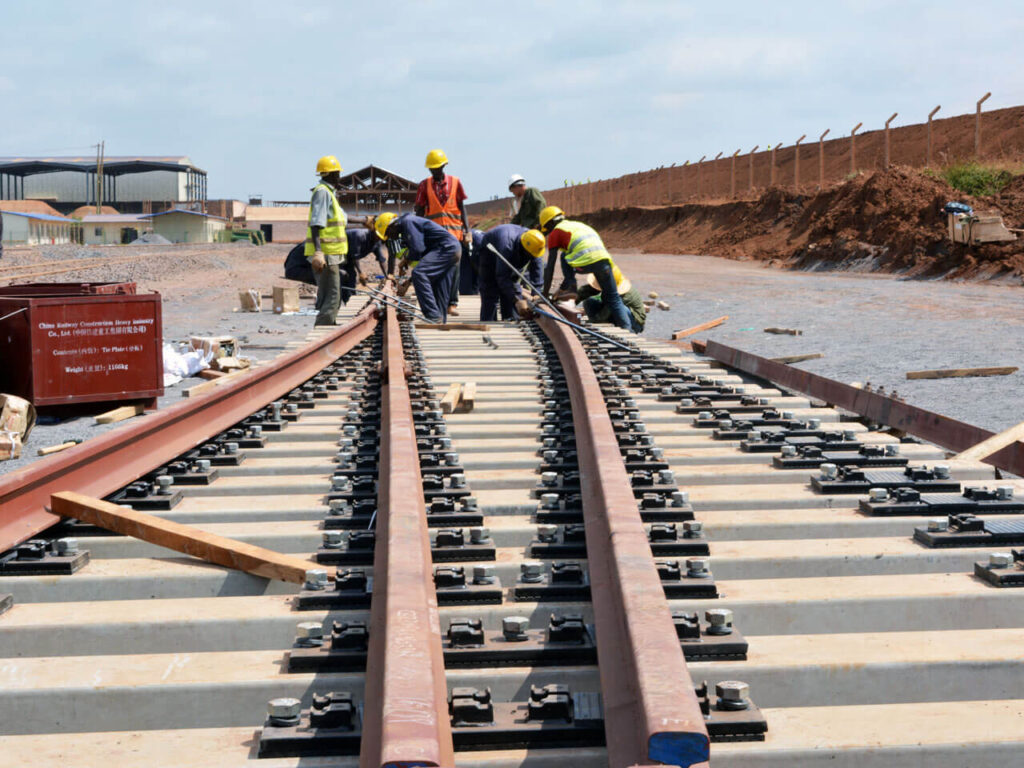The African Development Bank Group has granted approval for financing structures worth $696.41 million for Burundi and Tanzania, marking the commencement of Phase II of the Joint Tanzania-Burundi-DR Congo Standard Gauge Railway (SGR) Project. The funding provided by the Bank Group will support the construction of 651 kilometers of the Tanzania-Burundi railway line, specifically the development of a single electrified standard gauge track.
This project will be divided into three sections: Tabora-Kigoma (411 km) and Uvinza-Malagarasi (156 km) in Tanzania, and Malagarasi-Musongati (84 km) in Burundi. The new railway will be integrated with Tanzania’s existing railway network, providing direct access to the port of Dar es Salaam.
Notably, 400 kilometers of rail infrastructure have already been completed from Dar es Salaam to Dodoma during the first phase of the project, while construction on the section from Dodoma to Tabora is currently underway.
Under this initiative, Burundi will receive $98.62 million in grants from the Bank, whereas Tanzania will obtain $597.79 million in loans and guarantees.
The African Development Bank will serve as the Initial Mandate Lead Arranger (IMLA), responsible for structuring and mobilizing up to $3.2 billion in financing from commercial banks, Development Financial Institutions (DFIs), Export Credit Agencies (ECAs), and institutional investors. The total estimated cost of the project, encompassing both Tanzania and Burundi, amounts to nearly $3.93 billion.
The implementation of the Joint Tanzania-Burundi-DR Congo Standard Gauge Railway (SGR) Project will not only provide access to an efficient and cost-effective long-haul bulk transport service, but it will also have far-reaching benefits for various sectors.
The introduction of the SGR will not only incentivize large-scale mining and commercial agriculture, but it will also play a transformative role in turning the Central Transport Corridor into an economic corridor. By enhancing trade and manufacturing opportunities along the corridor influence zone, the SGR will contribute to economic growth and development.
One of the key advantages of the SGR is that it will reduce the reliance on road trucking transportation, which is not only prone to accidents but also incurs high road maintenance costs. By shifting to the SGR railway network, these challenges will be minimized, creating a more efficient and sustainable transportation system.
Also read Seke Sleepers Plant: How the SGR Lot 5 Project is a Testament to Tanzania’s Local Growth.
Furthermore, the SGR will unlock and connect key economic processing zones, industrial parks, Inland Container Depots (ICDs), and population centers along the central corridor. This will greatly enhance accessibility and promote economic activities in these areas. The improved connectivity will pave the way for increased trade, investment, and industrialization, ultimately driving economic and social transformation in both Tanzania and Burundi.
Importantly, the implementation of this project aligns with the priorities set by the East African Community (EAC) Rail Master Plan and the African Union’s Program for Infrastructure Development in Africa (PIDA). It represents a commitment to regional integration and cooperation, with the aim of fostering economic and social development not only within Tanzania and Burundi but also in the wider region.
In addition to the immediate economic benefits, this project will support the creation and development of institutions responsible for managing the new railway sector in Burundi. Capacity building initiatives, such as skills training, will also be implemented to ensure that both countries can effectively harness the potential of the SGR and sustain its operations in the long run.
Overall, the Joint Tanzania-Burundi-DR Congo SGR Project is a strategic undertaking that has the potential to catalyze economic and social transformation. By improving transportation infrastructure, enhancing connectivity, and facilitating trade and investment, this project will contribute to the resilience and development of both countries and the region as a whole.
The establishment of this railway system will enable Burundi to enhance the extraction of nickel, given that the country possesses the world’s 10th largest deposit located in the Musongati mining fields. Additionally, Burundi harbors valuable resources like lithium and cobalt, which are projected to yield substantial profits for the nation due to the railway link with the port of Dar es Salaam, a pivotal hub responsible for 80% of the country’s import and export trade.
Consequently, this initiative is poised to augment the national GDP and furnish Burundi with supplementary means to accelerate its sociopolitical and economic progress.
This undertaking is consistent with the Bank’s Ten-Year Strategy and encompasses two of its operational priorities, namely the “High 5”, “Integrate Africa” and “Industrialize Africa”. Moreover, it conveys conformity with the Bank’s Regional Integration Strategy Paper for East Africa (2023-2027) as well as the Bank’s Country Strategy Papers (CSPs) for Tanzania (2021-2025) and Burundi (2019-2023).


prospernizi32@gmail.com